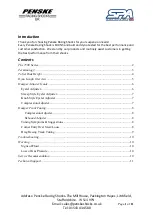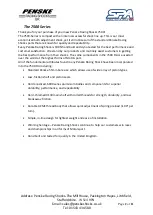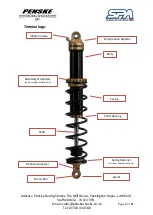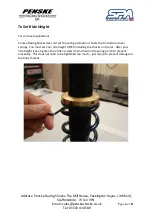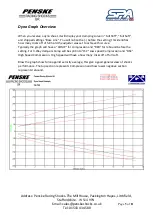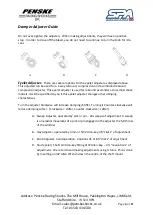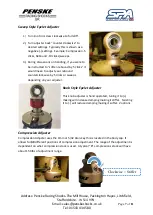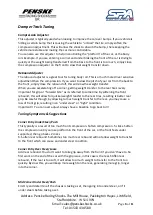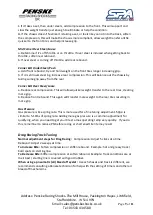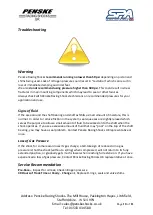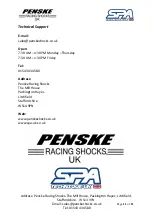
Address: Penske Racing Shocks-The Mill House, Packington Hayes, Litchfield,
Staffordshire.
WS14 9PN
Page
10
of
11
E-mail: [email protected]
Tel: 01543 434 580
Troubleshooting
Warning
Penske Racing Shocks
recommends running no lower than 50 psi
depending on piston and
shims being used. Lack of nitrogen pressure could result in “cavitation” which can result in
loss of immediate damping and rider feel.
We also
do not recommend using pressure higher than 300 psi
. This could result in stress
fractures in main mounting components which may lead to seal or other failures.
Always check with Penske Racing Shocks technicians on recommended pressures for your
application and use.
Signs of Fluid
If the area around the shaft bearing and shaft exhibits a small amount of moisture, this is
normal. In order to reduce friction in the system, seal squeezes are slightly relaxed which
serves the purpose to allow a small amount of fluid to be wicked onto the shaft when the
shock operates. If you see excessive amount of fluid that may “pool” on the top of the shaft
bearing, you may have a seal problem. Contact Penske Racing Shocks UK representative at
once.
Loss of Gas Pressure
If the shock for some reason loses its gas charge, a tell-tale sign of reduced or no gas
pressure is that the shock (without a spring) when compressed, will not return to its fully
extended position, or gradually gets much slower when reaching full extension. If you have
experienced a loss of gas pressure, Contact Penske Racing Shocks UK representative at once.
Service Recommendation
Pre-Race –
Inspect for oil leak, Check nitrogen pressure
30 Hours of Track Time or Yearly - Change
oil, Replace O-rings, seals and valve shims.


